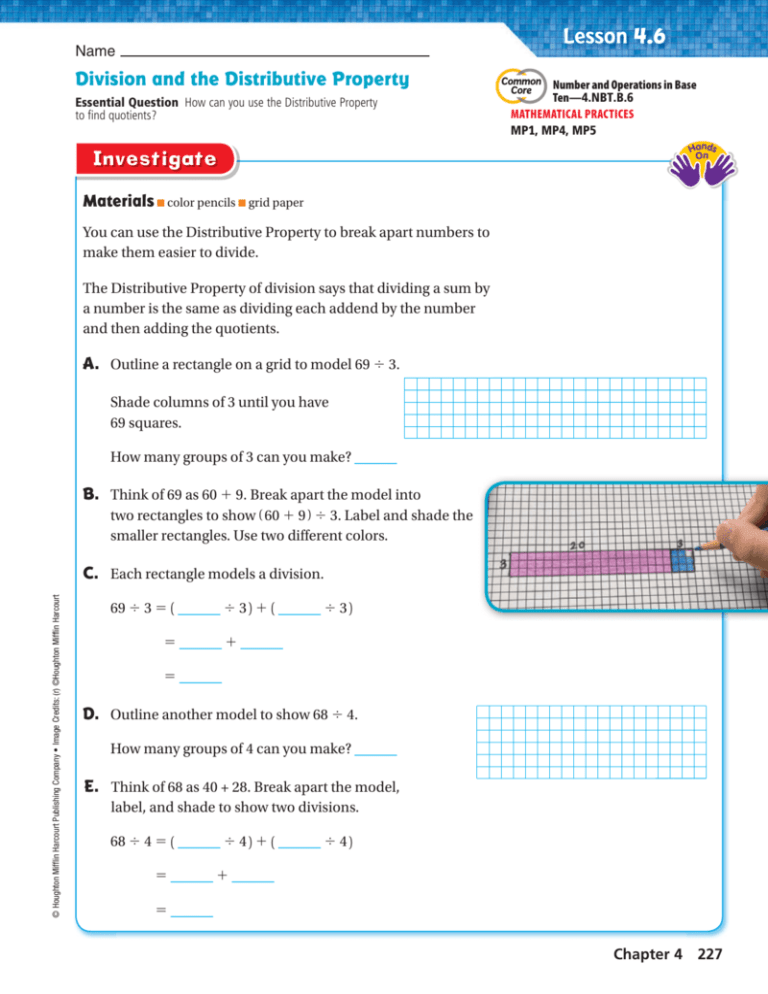

- How do you do division and the distributive property how to#
- How do you do division and the distributive property free#
Note: Not all browsers show the +1 button. Distributive property of multiplication over addition Regardless of whether you use the distributive property or follow the order of operations, you’ll arrive at the same answer. Logging in registers your "vote" with Google. By using the distributive law, 132 6 can be divided along 60 60 + 12, making division easier. According to distributive property of division (A + B ) / C A/C + B/C. Does Distributive Property Apply To Division dividing in square root to multiplication, but since divide is inverse from multiplication, you can distribute dividends by dividing and breaking them equally if divide in square root of multiplication. (If you are not logged into your Google account (ex., gMail, Docs), a login window opens when you click on +1. Distributive property of division is very helpful to solve complex division problems in simple manner.
How do you do division and the distributive property free#
Logarithm graph online free calculator, integers and distributive property, using. The Distributive Property, illustrated by the area model on the next slide, is another property of real numbers that helps you to simplify expressions. How do you put fractions on a TI-83 Calculator, kids calculator for. Note: If a +1 button is dark blue, you have already +1'd it. Distributive Property To solve problems in mathematics, it is often useful to rewrite expressions in simpler form. Here, for instance, calculating 8 × 27 can made easier by breaking down 27 as 20 + 7 or 30 3. You can use the distributive property of multiplication to rewrite expression by distributing or breaking down a factor as a sum or difference of two numbers. That is, if a, b, and c are real numbers such that a b and c 0, then a c a c. If you like this Page, please click that +1 button, too. The distributive property helps in making difficult problems simpler. The division property of equality states that when we divide both sides of an equation by the same non-zero number, the two sides remain equal. This is following the official order of operations rule that we’ve learned in the past. Normally when we see an expression like this. When you’re looking at an equation like this, you can see that the multiplication part distributes evenly to all the numbers within the parentheses. You can read this as the sum of a (b + c) is equal to the sum of a times b and a times c. The distributive property is sometimes called the distributive law of multiplication and division. The distributive property is expressed in math terms as the following equation: a (b + c) ab + ac. Subtract your answer (6) from the second number of the dividend (6) and the answer is 0.
How do you do division and the distributive property how to#
We solve the equation and multiply 15 to the addition of 2 and $\dfrac \right)$ gives 35 as the solution.If you like this Site about Solving Math Problems, please let Google know by clicking the +1 button. The distributive property tells us how to solve expressions in the form of a (b + c). Multiply the answer (3) by the divisor (2) and write the answer under the second number of the dividend.


Hint: We use the distributive property of $a\left( b+c \right)=ab+ac$ for the given numbers $a,b,c$. In this activity, students will use the distributive property to understand the ways that number sentences can be written.


 0 kommentar(er)
0 kommentar(er)
